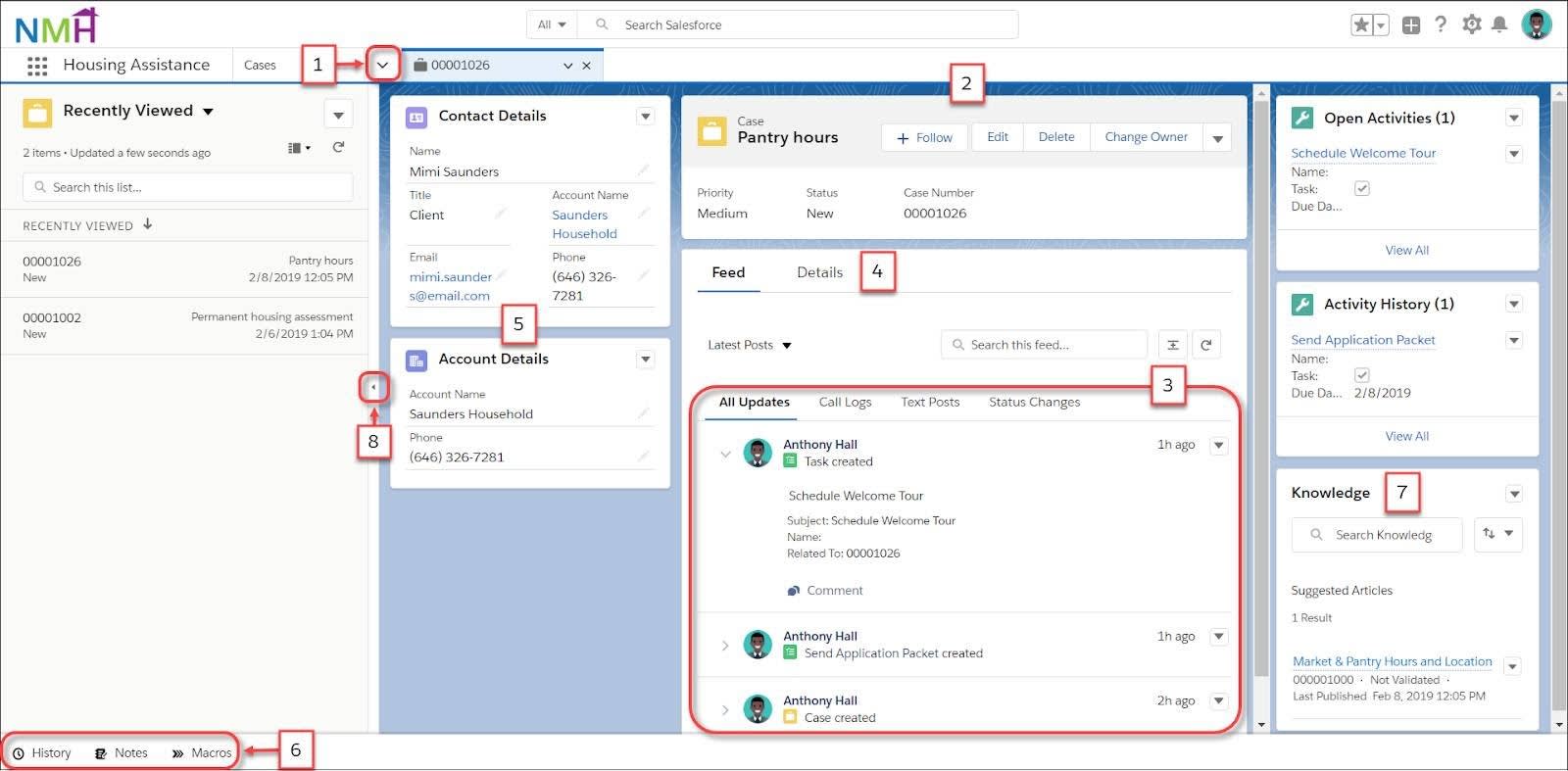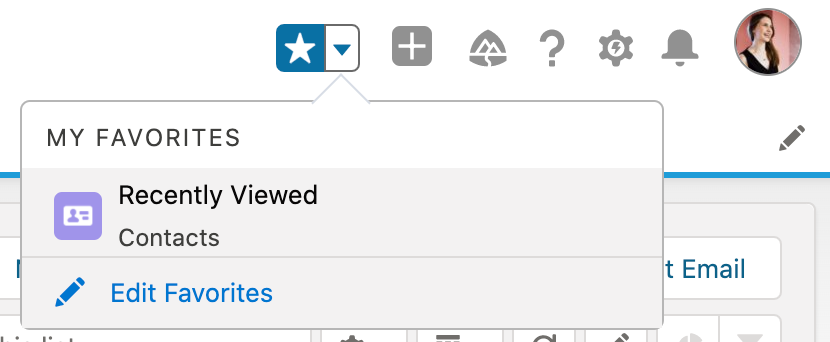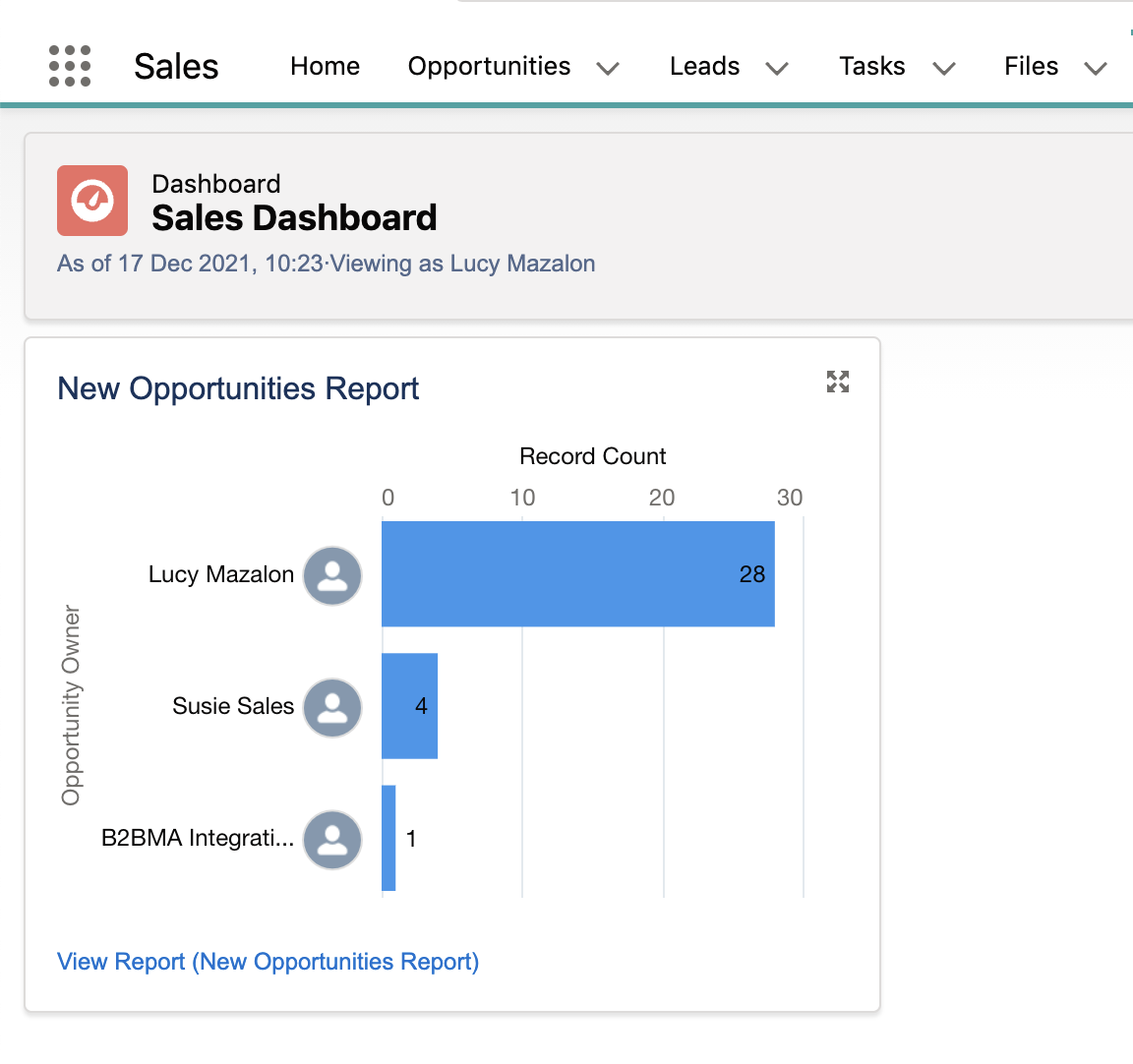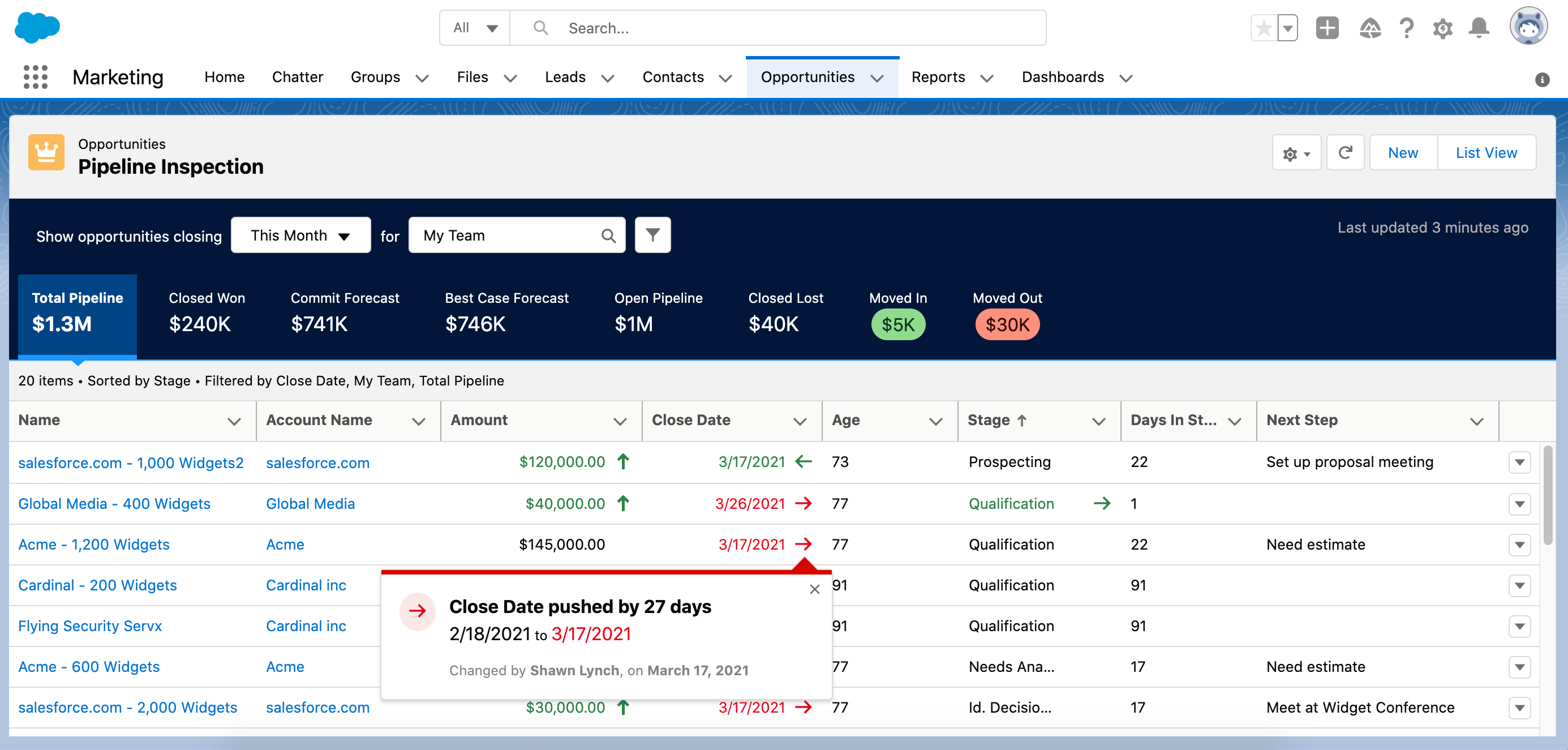Your organization has purchased Salesforce, it’s been implemented, and is ready to transform the way your teams work. There’s been significant monetary and time investment into Salesforce, that you assume will pay off – after all, you’ve heard the headline statistics about Salesforce delivering business transformation.
Then, you hear crickets. The reports and dashboards you wait to blossom with data, remain patchy. The teams in your organization are reverting back to old, off-platform ways to do their jobs.
Here starts a vicious cycle. Without users inputting new, updated data into Salesforce, data quality tanks. Users can’t be productive with a CRM that contains incomplete or outdated data. Inevitably, users lose faith in the platform entirely (we refer to this as the “three inseparable principles”).
The return on investment (ROI) dwindles as Salesforce fails to provide the value stakeholders hoped for. This bleak outlook could have been avoided by considering user adoption throughout.
This guide compiles the key takeaways from Salesforce user adoption resources that have been published over the years, on our site, from a wide range of perspectives – plus, I’ve included some of the newer features you can leverage to improve the Salesforce user experience.
What is Salesforce Adoption?
Salesforce adoption measures the extent to which users have incorporated Salesforce into their day-to-day tasks. User adoption indicates how well the Salesforce Admin (and development teams) have configured and customized Salesforce to fit the organization’s unique needs.
While the UX (user experience) and UI (user interface) are fundamental, Salesforce user adoption is related to these three main areas:
- Onboarding: how new users take to Salesforce (like “ducks to water”, or “cats to water”?).
- Tracking: gathering quantitative (and qualitative) metrics for how users interact with Salesforce.
- Optimization: making interface or automation changes that will improve user productivity.
Why is Salesforce Adoption Important?
The introduction painted a picture of failed Salesforce ROI. Aside from avoiding poor user adoption, why should your company focus on improving its adoption rate?
Get user adoption right, and you will increase your Salesforce ROI. What exactly does this mean?
- User productivity: Salesforce will automate most time-consuming tasks, and enable users to access information faster.
- Revenue: less friction, particularly in the Lead and Opportunity lifecycles, means “Closed Won” is reached faster.
- Accurate reporting: more data in one place will improve reporting accuracy on the as-is state, and further, predictive analytics that can steer the organization in the right direction.
- Customer experience: if people have a smooth, enjoyable experience interacting with your organization, they are more likely to purchase/renew. This all starts with a CRM that’s primed for collaboration so that “less wires are crossed” internally.
Overall, as a Salesforce Admin, think about your own gains. Proving Salesforce ROI will give executive teams faith in Salesforce, therefore justifying further investment – not only for exciting system enhancements but also your role and personal development.
How is Salesforce Adoption Calculated?
Salesforce adoption can be measured using Salesforce dashboards. You have the choice to use the pre-built dashboards from the AppExchange package (and customize to your needs), or create your own.


One of the many benefits of using Salesforce and the AppExchange is that so much comes “out-of-the-box” so you can hit the ground running. That said, every organization is unique and will have its own custom objects, business processes, and key metrics, therefore the “build your own” approach may be more suitable.
Why does Salesforce Adoption Fail?
New implementations of Salesforce are especially vulnerable to poor user adoption – that is, when an organization first rolls Salesforce out to its users. Salesforce Consultants, who implement new Salesforce orgs, know that user adoption will ultimately determine the project’s success; other success indicators, such as a smooth deployment, are only worth celebrating in the short term. It’s a bleak fact that at least one-third of CRM implementations fail.
These adoption issues can crop up at any stage in a Salesforce org’s lifetime. Whatfix, one of our partners, conducted a survey, which pointed to some major reasons why respondents don’t regularly use their CRM:
- 40% claimed that data entry into the system is time-consuming.
- 35% don’t feel equipped and need more training.
- No phased roll-out plan, where users feel overwhelmed with too much to learn, at once.
- Poor data quality results in users losing faith in the platform.
Poor data quality is worth discussing further. CRM data quality issues are practically universal – in one survey, Validity found that 95% of the respondents reported having issues. Your data could have started out at a good quality, but degrades over time without users inputting new, updated data into Salesforce. The vicious cycle continues where a CRM that contains incomplete or outdated data doesn’t support user productivity. Inevitably, users lose faith in the platform entirely
We refer to this as the “three inseparable principles” (read more…).
Our guide outlines Salesforce data quality, in a simple, approachable way.
How do I Improve Adoption in Salesforce? Salesforce Adoption Strategies
Salesforce adoption strategies are the steps you take to promote user adoption. This would include steps when designing solutions, user onboarding tactics, the tracking in place, and coming full circle, to optimization.
Many of these strategies fall within a UX/UI designer’s remit, however, UX/UI is also the responsibility of Salesforce Admins (expertise that Salesforce themselves are encouraging, with the UX Designer Certification).
Before we dive into the details, here is a list of effective Salesforce adoption strategies:
- Stakeholder Involvement
- UX Research and Documentation
- Experience Mapping
- Declutter the User Interface
- Target One Process to Perfect
- Use Lightning Consoles
- Dashboard Visibility
- Consider Collaboration
- UAT Testing
- Choose Power Users, “Train the Trainer”
- User Training
- Tap into Psychology
- In-app Guidance
- Gamification
- Explore the AppExchange
- Research Digital Adoption Platforms (DAP)
1. Stakeholder Involvement
Include the right people in the conversations from the start, from all levels within your org hierarchy, both managers and individual contributors. Often it’s the users “on the ground” you need to put in the most effort to win over.
2. UX Research and Documentation
Conduct interviews with users to gain qualitative data, such as sentiment. To gather unspoken information, observe users performing a series of tasks. While demonstrating a prototype of your solution, asking users “what would you expect to see next” is great to validate the user experience you are proposing. Finally, don’t forget user stories that outline the work you need to complete to meet the overall business requirement.
3. Experience Mapping
“Salesforce adoption can no longer be about a single application…Mapping the workflow involves understanding how much users need to move between the ‘nodes’ to get a task completed, how long they take, and where the bottlenecks to productivity are.” Find out more.
4. Declutter the User Interface
Make it easy to navigate Salesforce by decluttering the interface. This is a good exercise to do, to either a well-used org or to Salesforce out-of-the-box, before adding even more customizations.
- Remove unused tabs.
- Remove unused fields (with the help of Field Trip, for free). Ensure field labels are descriptive/avoid jargon, and add help text.
- Consider object-level and field-level security, to hide objects/fields that specific profiles don’t need to see.
- Use Dynamic Forms! (image above)
- Customize search layouts and list views, so that they display just the most relevant fields for users to easily identify the records they are searching.
5. Target One Process to Perfect
If you’re feeling overwhelmed, why not make it more manageable by improving adoption step by step? Choose one process, such as the Lead process. Start bringing out the champions in your organization who will see the value in your improvements.
6. Use Lightning Consoles
Lightning Consoles have been designed to boost productivity to enable users to multi-task and navigate Salesforce faster. Multiple sections on-screen display information that would otherwise have been displayed on separate pages. You can see the Service Console below, designed with customer service agents in mind:


7. Dashboard Visibility
Reports and dashboards bring data to life for users, revealing the impact their hard work has had! Sadly, getting these analytics in front of your users can be a hurdle for Admins to jump.
Not only should reports and dashboards be organized into a logical folder structure that uses a clear naming convention, and appropriate folder permissions set, you should also embed the most key report charts on Lightning pages – including the home page!
Here is an example of how the home page can be transformed into an analytic snapshot.
8. Consider Collaboration
Know how, and where, your users like to collaborate. This bustling communication hub could be Chatter, Slack, or MS Teams.
Evidently, connecting Slack/MS Teams to Salesforce is going to improve how much users are interacting with Salesforce data, without them having to switch tools. For Chatter, adoption can be improved by ensuring that team managers are @mentioning their team on records to set good expectations.
9. User Acceptance Testing
User acceptance testing (UAT) is one of the later stages of the application development lifecycle, once user requirements have been built in a test environment. In the context of Salesforce, this would be a full sandbox, as it contains data (a developer sandbox would be insufficient, as they only contain metadata) – you are aiming to recreate the user’s real experience.
As users get their hands on the solution, you are testing whether what has been built meets their expectations. In the end, what you’ve built within Salesforce goes hand in hand with both the testers’ expectations and the user stories you captured originally (testers’ expectations and user stories being the same…hopefully).
10. Choose Power Users, “Train the Trainer”
Power users leverage the Salesforce platform to boost their productivity, day-to-day. They discover new, more efficient ways to accomplish a task, know where to find reports for insight, and champion Salesforce among their teams, too.


11. User Training
There are many reasons why companies are investing in Salesforce training now more than ever.
Aside from the well-known ways to train users on how to use a CRM, Salesforce gives users the chance to personalize their own workspaces. Ask users to make Salesforce their own by customizing the navigation bar, defaulting list views, and creating shortcuts to Salesforce pages with Favorites.


12. Tap into Psychology
You could try an alternative approach to convince users to change their opinion of Salesforce. Heather Black identified techniques, such as Behavioural Reward vs. Punishment.
13. In-app Guidance
As Salesforce added more enhancements to their platform, they knew in-app guidance was essential for getting new features into the hands of users. In-app Guidance walks users through a series of informative snippets on features, and when to use them, served in a variety of ways, such as popups.
myTrailhead “enables businesses to build customized, gamified, bite-size learning for their employees, customers, and partners – all by leveraging Salesforce’s learning platform (Trailhead)”. Salesforce Admins write the content their learners need, and serve that training as Trailhead modules/badges bespoke to their organization’s setup.
Salesforce Learning Paths enable companies to integrate Trailhead and myTrailhead learning technologies directly into Salesforce, for on-the-job learning specific to an individual’s role in the organization. In other words, you could say Learning Paths are Trailhead/myTrailhead plus In-app Guidance.
14. Gamification
Turning any activity into a game appeals to everyone’s sense of curiosity (and competition). People find enjoyment in measuring themselves against a goal – or against others. Competition, in this context, can be applied to encourage everyone to work towards a common goal and beneficial behaviors.
Dashboards, once again, are a great tool. Just like a typical sales dashboard, bar charts can visualize progress. Below is an example of a chart, where the bar represents an individual’s performance towards activity logging:
There are plenty of organizations that can spin Salesforce data into dashboards that have a more “leaderboard” style, too.
15. Explore the AppExchange
The Salesforce AppExchange is the expansive app marketplace for Salesforce. There are add-ons listed here that aim to boost your user adoption ratings, from multiple angles.
- Excel connectors: I said in one app review that “you can take users out of Excel, but you can’t take the love of Excel out of some users”. When we compare Excel charts versus Salesforce reports, there is a new user interface to navigate, terminology to learn, and let’s not forget that the dataset itself is not exposed in Salesforce like it is in Excel. Examples that can bridge this gap include XL Connector, CloudExtend.
- Automatic logging: start-stop work will drain any user’s productivity, fast. Having tools that automatically log activities and data updates will mean users maintain their momentum. Examples include Cirrus Insight, SalesforceIQ.
16. Research Digital Adoption Platforms (DAP)
Salesforce’s own In-App Guidance and Walkthroughs offer enough for some organizations. Once you’ve evaluated how user guidance can benefit your Salesforce adoption, you may be inclined to take it a step further, by investing in a Digital Adoption Platform (DAP).
For a start, an admin can configure the DAP to work across multiple user experiences – from one “control panel”. The guidance doesn’t have to stop when users hop out of a Salesforce tab. DAPs also support multiple tactics in this list, eg. to automate empty clicks, data retrieval, and data entry. Find out more.
Salesforce Adoption for Sales Teams
Out of all teams in an organization, sales teams come up time and time again in the adoption conversation. Why?
Unlike customer service teams (where cases are central to their workdays), salespeople don’t actually need Salesforce to sell. Sure, there’s potential for huge boosts in sales productivity, but if salespeople find using Salesforce a drain on their time, they’re very likely not to sink more time into the CRM.
According to some estimates, salespeople spend an average of 4+ hours per week updating Salesforce. That doesn’t sound too bad, until you realize only 40% of the information the organization actually requires ends up in there.
Sales team productivity can start with the technology. Innovative organizations (including Salesforce themselves) recognized sales user experience gaps with Salesforce UX. This paved the way towards Sales Engagement Platforms (SEPs).
- Salesforce released High Velocity Sales (HVS), which has a “SEP” feel about activity management. HVS brings together sales-optimized and AI-powered features, such as Einstein Call Coaching which gives salespeople, and their managers, insights and trends from sales calls to help coach towards improvements.
- Pipeline Inspection: an interface that provides managers with detailed insights into the performance of their team. One view is week over week comparisons that highlight Opportunities that might need particular support or coaching (image below, available for free).
- Other players on the market are making waves. Here’s an introduction to SEPs, and how to implement an SEP successfully.
Circling back to the gamification point, the majority of salespeople are competitive by nature. When broadcast as a leaderboard, most aspects of CRM good practice can become an attractive “carrot” for the average salesperson – whether that’s to log their activities, tidy up their open Opportunities, and more.
But don’t go too “Big Brother” with your tracking, or make people distrustful of you. There’s a balance between instilling accountability with friendly competition, versus surveillance to criticize.
You may find that, as a result, there are “power users” laying in wait, in any sales team – you just need to bring out their potential:
Salesforce Adoption for Marketing Teams
Marketing teams also deserve a spotlight when it comes to Salesforce user adoption (at least, in my opinion!).
- Marketers won’t always “live” in Salesforce: marketing automation platforms are used heavily instead. This means your Salesforce org could unintentionally make your marketers feel sidelined, or intimidated. Having said that, Pardot is making huge strides to bridge this gap with the Pardot Lightning App, improved data sync, and more.
- Salesforce marketing features require expertise: there’s no one way to set up a campaign hierarchy. There are also no set rules for what to name your campaign member statuses. Users have the freedom to set marketing infrastructure like this, in Salesforce, without perhaps considering the long-term picture. If the infrastructure ends up impractical, marketers will be unable to use it, causing a huge amount of frustration.
Summary
Never forget how important Salesforce user adoption is. You should keep the “three inseparable principles” to hand throughout your Salesforce career.
This guide aimed to compile the key takeaways about Salesforce user adoption, from resources that have been published over the years, on our site, from a wide range of perspectives:
- Salesforce user adoption indicates how well the Salesforce Admin (and development teams) have configured and customized Salesforce to fit the organization’s unique needs. This can be split into three aspects: onboarding, tracking, optimization.
- Get user adoption right, and you will increase your Salesforce ROI – user productivity ( automate most time-consuming tasks, less friction, particularly in the Lead and Opportunity lifecycles), accurate reporting, and an allround better customer experience when internal team members are not miscommunicating.
- To measure Salesforce user adoption, you can use Salesforce dashboards. Opt for the pre-built dashboards (available from the AppExchange, for free), or build your own.
- Salesforce adoption strategies are the steps you take to promote user adoption. This would include steps when designing solutions, user onboarding tactics, the tracking in place, and coming full circle, to optimization.
- Out of all teams in an organization, sales teams come up time and time again in the adoption conversation because they tend to be the least tolerant of system inefficiencies (ie. excess steps to complete, too many clicks). Sales would benefit from highly optimized user interfaces, such as sales engagement platforms.







